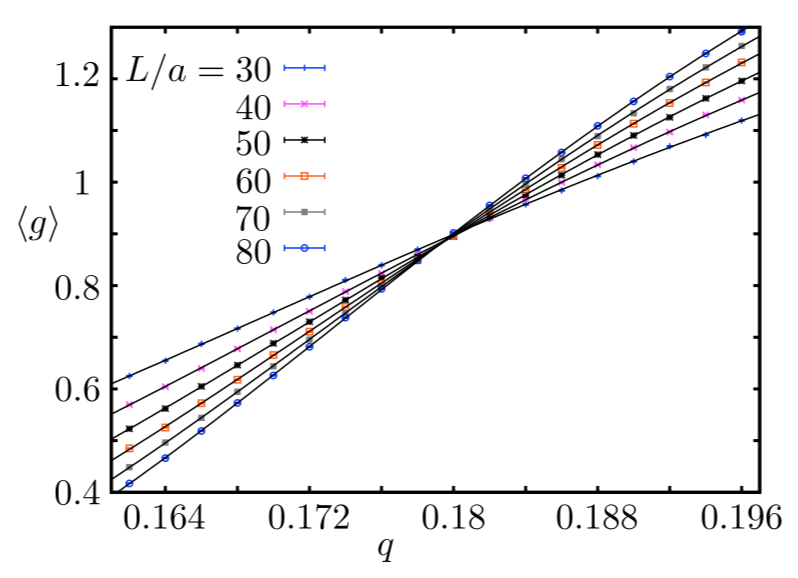The finite size scaling analysis is described in Appendix B of Thermal metal-insulator transition in a helical topological superconductor. This is for a different type of phase transition (metal-insulator instead of percolation), but the method of analysis is analogous.
In summary, you have a quantity $g$ that depends on system size $L$ through a powerlaw function $F(u_0L^{1/\nu},u_1L^y)$, with exponents $1/\nu>0$ and $y<0$. In the large-$L$ limit only the $L^{1/\nu}$ term matters, that is the "scaling law" and $\nu$ is called the critical exponent. The $L^{y}$ term is the leading order correction to scaling. You perform a Taylor expansion of $F$ in powers of $u_0$ and $u_1$, up to some order $N_0$ and $N_1$, respectively. Then you fit the data to that functional form, with the coefficients of the Taylor expansion as the fit parameters. The result converges to something like the plot below (from the cited paper), and allows you to extract both the critical exponent $\nu$ as well as the critical point.

To answer specifically the first question: the functional form of $F$ is chosen such that there is a common intersection point by construction. If you fail to achieve a good fit, it indicates that the system has more than a single relevant scaling variable in the large-$L$ limit. That is certainly possible, but the physics of many phase transitions it that indeed, single-parameter scaling applies. So all microscopic parameters become irrelevant at the transition point, because of a diverging correlation length.
To answer the second question: the finite-size corrections to scaling are included in the fit, and you add higher and higher order terms until you reach a chi-squared value per degree of freedom of unity.
